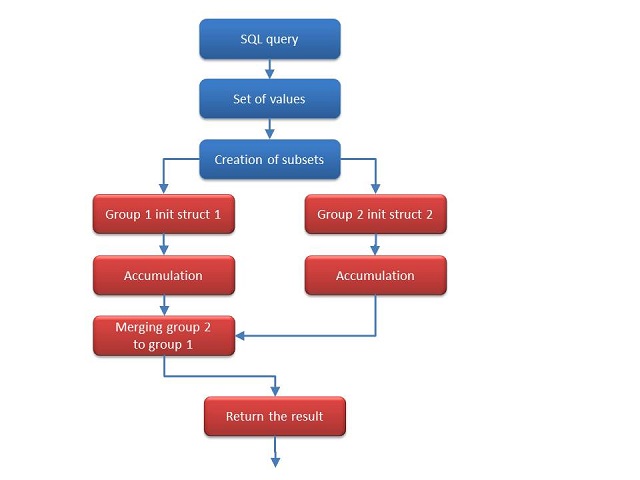Aggregation definition is - a group, body, or mass composed of many distinct parts or individuals. How to use aggregation in a sentence. An aggregate function performs a calculation on a set of values, and returns a single value. Except for COUNT, aggregate functions ignore null values. Decomposable aggregate functions.

Aggregate functions present a bottleneck, because they potentially require having all input values at once. In distributed computing, it is desirable to divide such computations into smaller pieces, and distribute the work, usually computing in parallel, via a divide and conquer algorithm. A common aggregation purpose is to get more information about particular groups based on specific variables such as age, profession, or income. The information about such groups can then be used for Web.
Aggregate definition is - formed by the collection of units or particles into a body, mass, or amount : collective: such as. U- SQL provides both built-in aggregation functions and the ability for the user to define user-defined aggregators. An aggregator will compute a single result value over a group of values and will have an identity value for the case that the group is empty.
Average Age of Employees can be calculated by AVG(Age) function. Association vs Aggregation vs Composition. The question What is the difference between association, aggregation , and composition has been frequently asked lately. Aggregation and Composition are subsets of association meaning they are specific cases of association. In both aggregation and composition object of one class owns object of.
The SQL GROUP BY Statement. The GROUP BY statement groups rows that have the same values into summary rows, like find the number of customers in each country. Hence some improvements or enhancements were made to the existing ER Model to make it able to handle the complex applications better.
Summary: in this tutorial, you will learn about the SQL aggregate functions including AVG(), COUNT(), MIN(), MAX(), and SUM(). An SQL aggregate function calculates on a set of values and returns a single value. For example, the average function ( AVG) takes a list of values and returns the average. Synonyms for aggregation at Thesaurus.
Find descriptive alternatives for aggregation. The distinction between normal associations, aggregation and composition may not initially seem too complicate but delving deeper into the definitions the UML presents and the complexities of software systems can muddy the waters. If you omit the GROUP BY clause, then Oracle applies aggregate functions in the select list to all the rows in the queried table or view. You use aggregate functions in the HAVING clause to eliminate groups from the output based on the of the aggregate functions , rather than on the values of the individual rows of the queried table or view. This is exactly the same as an association with the exception that instances cannot have cyclic aggregation relationships (i.e. a part cannot contain its whole).
Is this the only one difference? Can you give some example in PHP, showing the difference? In this case, all fields without aggregation function specified are treated as group-by fields in the aggregation process. SQL Server also supports other aggregates such as STDEV and VAR.
So - while you have an ownership relationship with composition the owned object is also destroyed when the owner is - an aggregation (and the objects contained) can exist independently. Update: Apologies - this answer is far too simplistic in hindsight. I need some help with building a monthly aggregation using only SQL.

Data aggregation may be performed manually or through specialized software. The aggregation pipeline allows MongoDB to provide native aggregation capabilities that corresponds to many common data aggregation operations in SQL. As the Basic SQL Tutorial points out, SQL is excellent at aggregating data the way you might in a pivot table in Excel. The functions themselves are the same ones you will find in Excel or any other analytics program. It has a single input and a single output, and typically the number of rows in its output is far less then in its input because it returns just a single row for each group of rows in.
SQL provides aggregate functions to help with the summarization of large volumes of data. This function can produce a single value for an entire group or table. They operate on sets of rows and return based on groups of rows.
Nincsenek megjegyzések:
Megjegyzés küldése
Megjegyzés: Megjegyzéseket csak a blog tagjai írhatnak a blogba.